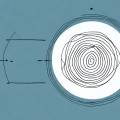Understanding the tangent of the unit circle can be a difficult concept for students to grasp. But with a thorough understanding of its anatomy and unique properties, mastering the unit circle tangent becomes much simpler. This article will cover all topics related to the unit circle tangent, explaining what it is and how to use it to find tangent values and solve trigonometry problems.
What is the Unit Circle?
The Unit Circle is a circumference with its origin point at the center. It has a radius of one and it is divided into 360 degrees of orientation, with each degree having its own unique coordinates. This allows easy calculation of trigonometric values, including the unit circle tangent, when measuring angles in a Cartesian plane.
The unit circle is a useful tool for understanding the relationship between angles and their corresponding trigonometric values. It is also used to calculate the length of an arc, the area of a sector, and the area of a circle. Additionally, the unit circle can be used to graphically represent complex numbers and to solve equations involving trigonometric functions.
The Anatomy of the Unit Circle
In its simplest terms, the anatomy of the unit circle is just a circle with its origin point at the center. It is divided into 360 degrees and has a radius of one. Each degree corresponds to an angle in degrees on the x-axis (horizontal) and the y-axis (vertical).
The unit circle also includes a few other important elements. These include the circumference (the full 360 degree circle starting and ending at the origin), the radius (the distance from the center of the circle to its edge), and the coordinates (the points where the radius intersects each degree on the circle).
Exploring the Tangent Function
The tangent function is defined as the ratio of the opposite side length to the adjacent side length of a right triangle. When we use this formula within the context of the unit circle tangent, we can use it to calculate and derive specific trigonometric values.
For example, if we were to draw a right triangle within the unit circle, and label it with two angles as well as a side length, we could plug that information into our definition to find the tangent of that angle.
Using the Unit Circle to Find Tangent Values
Finding tangent values with the unit circle is very simple. All you need to do is pick an angle, draw a triangle within the unit circle using that angle, and measure out the side lengths. From there, you can plug that information into the tangent ratio definition, which will give you your value.
For example, if you measured out an angle of 60° with an opposite side length of 0.5 and an adjacent side length of 0.866, your tangent value would be 0.5/0.866, or 0.57.
Memorizing the Tangent Values of Common Angles
The unit circle contains many angles that come up frequently in math problems. Most notably, these include 30° (1/√3), 45° (1), and 60° (√3/2). Memorizing these values can save you time and energy when solving trigonometry problems.
Applying the Unit Circle Tangent to Word Problems
Word problems are a great way to apply your knowledge of the unit circle tangent. All you have to do is read the problem carefully and identify any angles that are given in degrees. Then you can use these angles to draw a triangle on the unit circle and find the appropriate tangent value.
Solving Trigonometry Problems with the Unit Circle
In addition to word problems, you can also use the unit circle tangent to solve more complex trigonometry problems. For example, if you know how to draw a graph that plots angles on the x-axis and their corresponding values on the y-axis, you can use this graph to quickly look up multiple tangent values.
Understanding Negative Tangent Values
It is important to understand when a tangent value is negative. In general, if an angle is greater than 90° then its tangent value will be negative. Similarly, if you measured an angle of 270° on the unit circle then its tangent value would also be negative.
Comparing and Contrasting Different Types of Trigonometric Functions
The unit circle tangent is only one type of trigonometric function. Other trigonometric functions include sine, cosine, secant, cosecant, and cotangent. While they are all closely related, they are used to solve different types of problems. Sine and cosine are usually used with right triangles, while secant, cosecant, and cotangent involve ratios of circles.
Understanding the differences between all these trigonometric functions can help you decide which type of equation is best suited for your problem-solving needs.
As you can see, mastering the unit circle tangent is not as difficult as it may initially seem. By comprehensively studying its anatomy and unique properties, students can quickly become proficient in determining trigonometry values within the unit circle.





